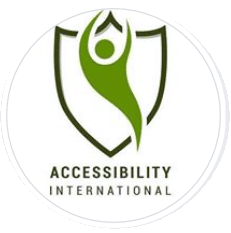The tech industry has the ability to make the world a significantly more accessible place for everyone. Groceries, prescriptions, clothes, and other household items can be delivered to your door in just a few clicks. TV shows can be captioned. Books can be read aloud. Smart speakers can tell you whatever you want to know by simply asking a question.
Impressive accessibility advances can sometimes overshadow less exciting accessibility features like an accessible website and PDF files. PDFs, for example, often share important information and are stored on websites or in emails and must be accessible to everyone.
Up to 25% of the population has a disability and may use assistive technology. Often that means they’re unable to access your website and PDFs unless they’re compatible with assistive technology. If they’re not compliant, it also can put you at risk for ADA lawsuits.
PDF documents that need to be accessible in the tech industry:

- User manual
- Privacy Policy
- Software License Agreement
- White papers
- Training schedule
- Product catalog
What laws apply?
Title III of the ADA prohibits discrimination on the basis of disability at places of public accommodations. The Supreme Court has recently sided with a number of circuit courts that have held that websites are also places of public accommodation, especially when they are nexus to a physical place of public accommodation. That includes internally-facing resources because employment discrimination is prohibited as well.
If you have any government contracts, you may be bound by Section 508 of the Rehabilitation Act. This requires all Electronic Information Technology to be accessible to everyone, both employees and the general public. The U.S. Access Board is responsible for developing Information and Communication Technology (ICT) accessibility standards regarding Federal procurement practices. The Access Board issued guidelines pertaining to accessibility requirements covered by Section 508.
What standards should you meet to be compliant?
ADA Compliance
The ADA doesn’t specifically outline standards by which to evaluate digitally accessibility. The Department of Justice has left digital accessibility vague because accessibility will look different for each website depending on its content and structure.
However, Web Content Accessibility Guidelines (WCAG) will give you the most comprehensive standards for ensuring an accessible website. WCAG is the industry standard, though it’s not officially part of ADA regulations. A number of different countries and circuit courts in the US consider it the standard for digital accessibility.
Section 508 Compliance
Section 508 guidelines require all forms of communication to have an alternative method by which to access the information. For example, anything in a written format should also be accessible audibly or using Braille. Making PDF documents, which are visual, into accessible formats that are compatible with assistive technology meets this requirement.
What happens if your website isn’t compliant with the ADA?
It is discriminatory to deny certain groups the ability to access your digital information. When people are denied access to information, they feel frustrated and may take legal action if the accessibility issues remain unresolved. Accessibility lawsuits are time-consuming, bad for business, and very expensive.
When they’re unable to access the information they’re looking for on your website, 69% of visitors with disabilities will click away from your website. They will take their business to a competitor who has considered their needs. Chances are, their friends and family will take their business elsewhere as well.
Whether you’re facing a lawsuit or have customers who are choosing your competitors, inaccessible PDF documents will cost your company reduced income, increased expense, and damage to your reputation.
ADA Discrimination Cases in the tech industry:
Mendez v Apple
 In 2018 even Apple faced a class-action lawsuit on behalf of people with disabilities, brought by plaintiff Himelda Mendez of New York. Mendez, who is blind, claimed that her screen reader was not able to read the information on Apple’s website because it was not formatted to be accessible. She was unable to complete simple tasks on the website such as purchasing merchandise, making service appointments, or learning about the services provided in her local Apple store.
In 2018 even Apple faced a class-action lawsuit on behalf of people with disabilities, brought by plaintiff Himelda Mendez of New York. Mendez, who is blind, claimed that her screen reader was not able to read the information on Apple’s website because it was not formatted to be accessible. She was unable to complete simple tasks on the website such as purchasing merchandise, making service appointments, or learning about the services provided in her local Apple store.
Included in the list of accessibility errors were missing alt text, links without text description, and redundant links. To resolve the case, the Plaintiff requested Apple become compliant with WCAG. Apple was eager to work towards that goal; they pride themselves on being pioneers in the development of accessible products for their consumers.
Bishop v Amazon
Amazon also faced litigation for failing to provide accessible resources to the public. New York customer Cedric Bishop, who uses a screen reader, was unable to access Amazon’s website. Amazon had failed to provide alternative text for website images, and also used images without alt text as navigational elements.
The National Federation of the Blind v Amazon
The National Federation of the Blind (NFB) also brought a lawsuit against Amazon. Amazon’s Kindle had its own converter called MobiPocket to digitize paper versions of the documents, books, and magazines available to Kindle users. However, the converter was not digitizing those documents into accessible formats and assistive technology users weren’t able to use those documents. Besides receiving negative publicity from the case, it also caused the City of New York to delay awarding a $30 million contract to Amazon.
Amazon was quick to respond and reached an agreement with the NFB, making them a leader in accessibility technology. As part of the settlement, Amazon agreed to use NFB members to test and validate new technologies for people with visual disabilities, and to have their progress assessed by a 3rd party.
How to avoid litigation:
When you begin tackling digital accessibility, all of your digital resources will need to be made accessible, not just your web pages. Make all video, audio, and PDF files accessible as well.
PDFs such as user manuals, privacy policies, or internal reports can be quickly and easily remediated in-house with PDF remediation software such as Equidox. Remember that remediation usually isn’t a one-and-done process. It’s important to ensure each new version of an updated document remains accessible to everyone.




